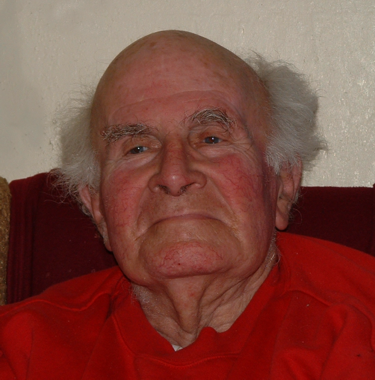George Hartnell, RIP
Born in Coulstreng house Harry Stoke circa 1915 and lived there all his life.
but moved next door in “The Cottage”. Next door was the Bailiff’s house.
 His father relates the tale that the Duke of Beaufort would allow tenants to raise a home
on their land if they had a source of water, thus many of the homes that
appeared around 1830 should have a well or other waters source in their grounds.
He has a well and he describes the water as “sweet”. Stoke Gifford water was
known for its bad taste. When landscaping AXA, the surveyors regularly checked
the level of his well. Had it lowered they would have had to reconsider their
plans to include the lake in the grounds. Next door was the Bailiff’s house.
His father relates the tale that the Duke of Beaufort would allow tenants to raise a home
on their land if they had a source of water, thus many of the homes that
appeared around 1830 should have a well or other waters source in their grounds.
He has a well and he describes the water as “sweet”. Stoke Gifford water was
known for its bad taste. When landscaping AXA, the surveyors regularly checked
the level of his well. Had it lowered they would have had to reconsider their
plans to include the lake in the grounds. Next door was the Bailiff’s house.
The Paddocks’ is shown illustrated in the 1915 sales catalogue as ‘Harry Stoke Farm’, whereas the locals know the two houses erected by the Beaufort estate as Harry Stoke farm and these are shown thus on the 1889 Ordnance Survey map of the area. Don Brimble was at one time the farmer along with his brothers Alfie and Pullit, though no one knows how 'Pullit' got his nick name. Don was in charge and Alfie did the hedging and ditching. George remembers the day when Don forgot to tie the back legs of one of cows during milking. The sight of Don, milk pail and stool flying through the air was quickly followed by every swear word in Don’s extensive repertoire much to the amusement of the onlookers. The milk from this farm was of the highest quality whereas Captain Mortimer often could not sell his milk from Wallscourt farm and gave it away to the Muller Orphanage.
After attending the village school at the old school rooms in Stoke Gifford [ they closed as a school in 1986] Don won a scholarship to Sodbury Grammar school and this included 5/- [ five shillings ] a week for bus fare. The bus went along Harry Stoke Road. If the students decided to go by bike instead of bus, the parents were given the bus fare for each school day at the start of the term, thus being a welcome supplement to the family income. He recalls that Miss Rook was his school teacher from 1924 to 1931.
Harry Stoke hasn’t changed much during his life time except for the new developments in the fields to the west. There is one new house in the village and the roads around it have been developed. In his younger days George points out that the only way to get from Stoke Gifford to Filton was either by Little Stoke or Harry Stoke, and although a quiet agricultural community like all the others around Harry Stoke was a busy thoroughfare because of the road system. To get to Bristol you had to take a bus either from Wallscourt road or Filton.
For a brief time George worked for the drift mine in the fields the other side of the A4174, but after the changeover from coal to oil at Portishead power station there was little demand for its coal, as there were plentiful supplies from the mines around Frampton Cottrell.
Electricity wasn’t widely available until after the war. Wallscourt Farm was using oil lamps in 1947, but they did have a telephone and a wireless run from accumulators that had to be charged regularly.